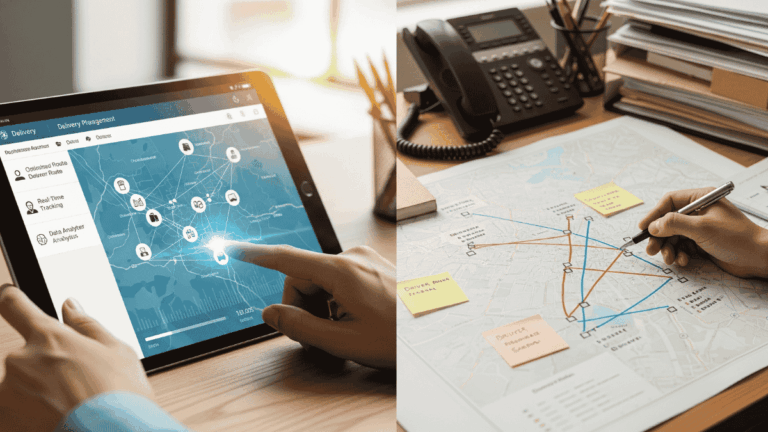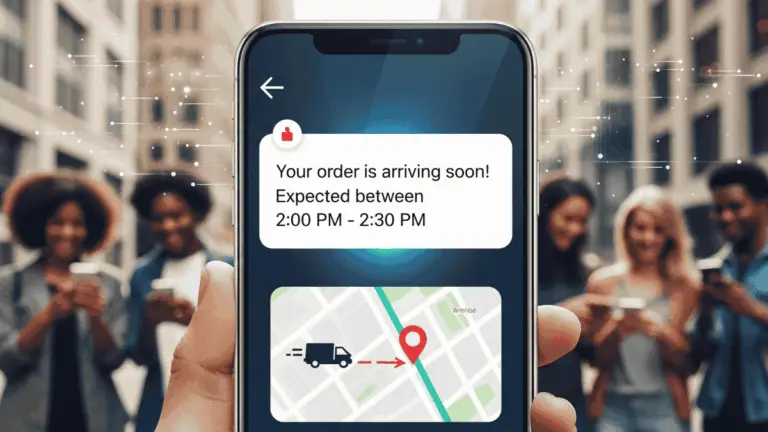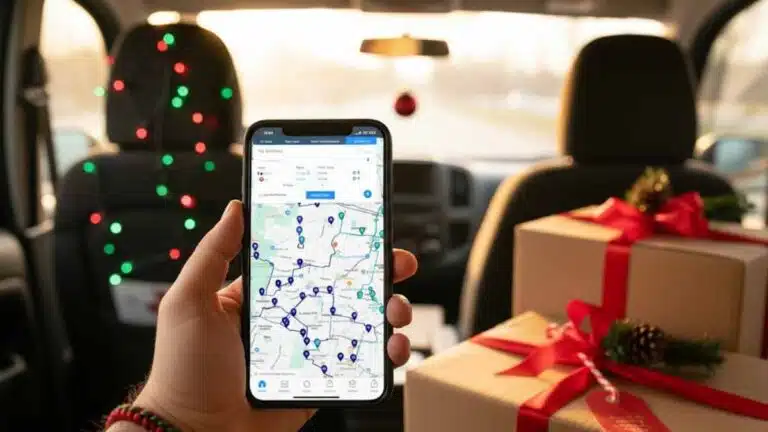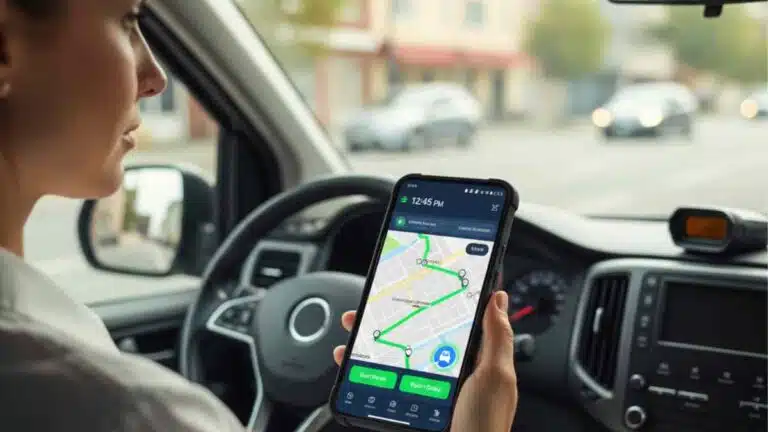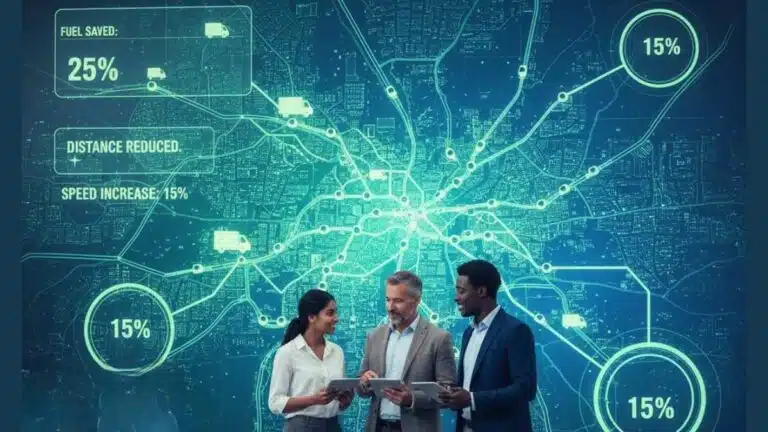Route optimization software makes your delivery days run smoother. It takes into account every stop, every traffic delay, and every customer time window, turning the chaos into a plan that actually works.
The result is shorter routes and less fuel wasted. For most businesses, that’s the difference between scraping by on tight margins and actually running an efficient, profitable operation.
In this article, we’ll be looking at the ways route optimization saves hours (and resources) every day. First, let’s define what route optimization really means.
What Route Optimization Really Means
People think route optimization is about finding the shortest route. While that’s correct, it also has to factor in real life.
Things like traffic delays, customer preferences, tough delivery time windows, vehicle size, driver hours, schedules, load weight, detours. Priority deliveries and rush orders. You get the idea.
Then it arranges delivery stops in the best order, taking into account constraints like time windows, vehicle capacity, traffic, and service durations.
When it’s done right, three things happen. You drive fewer kilometers. More orders arrive on time. And your cost per stop drops fast.
If your routing tool ignores these constraints, you’ll still have wasted miles, missed windows, and frustrated drivers.
Why Route Optimization Matters Now
Last-mile delivery is often the most expensive and inefficient leg of logistics. It can easily become the place where logistics budgets go to die.
According to the World Economic Forum’s Future of the Last-Mile Ecosystem, city deliveries could rise by 36% by 2030. That would mean a 21% jump in emissions if nothing changes.
Route optimization is one of the few levers that actually works to fix that. It cuts travel time, saves fuel, and keeps service levels up even as demand climbs.
And the right software really matters. McKinsey reports that blind handoffs (where goods change hands without clear coordination) account for between 13 and 19% of logistics costs in last-mile systems.
Thus, digital route optimization can cut that waste by almost half (approximately by 40%).
That’s your context: cities are under pressure, emissions are rising, and deliveries are urgent. Route optimization is one answer to that stress.
Proof That Route Optimization Works
UPS already proved it. Their ORION routing system cuts about 100 million miles of travel every year, while also saving 10 million gallons of fuel. That’s billions in operating costs saved.
Sure, UPS is a big player, but you don’t need a global fleet to see results. Even small teams running daily routes can see a drop in kilometers per stop once they use optimization software properly.
The key metrics to watch:
- On-time rate above 95%
Fewer overtime hours - More stops completed per route
- Lower cost per delivery
- Less fuel used per stop
If you’re tracking those, you’ll see the ROI.
Who Uses Route Optimization Software
The real question is, who doesn’t use route optimization software?
Couriers and e-commerce businesses use it to group orders by location and time window. Field service teams like HVAC or electricians use it to match the right tech with the right skills to the right job.
Then there are grocery and meal delivery operators who depend on route optimization for freshness and tight ETAs. In Australia, My Foodie Box, for example, uses the software to deliver locally sourced ingredients right to the customer’s door.
Construction and trade companies use it for bulk or oversized loads that can’t just take any road, while healthcare logistics rely on it for medication or temperature-sensitive deliveries.
All these industries share the same goal: get there faster, waste less time, and keep customers happy.
How Route Optimization Software Works
Here’s the short version.
- You feed it your orders, customer addresses, and any special rules (like time windows or vehicle limits).
- The system runs those through an algorithm, calculating the smartest order to complete the route.
- It pulls live traffic, weather, and road data to adjust in real time.
- Then, it spits out a route plan that drivers can follow in the drivers app. Complete with live ETAs, rerouting, and proof of delivery built in.
It is logistics math, but made simple.
How to Roll It Out in 60 Days
Think of this as your quick-start playbook for getting route optimization up and running in two months flat.
Weeks 1 to 2:
First, you need to clean up your address data. Make sure everything’s accurate and there are no missing postcodes or bad entries.
Then track your current numbers:
- how long deliveries take,
- how much fuel you burn, and
- how often you hit your promised delivery times.
That’s your baseline.
Weeks 3 to 4:
Pick a few drivers to test it out. Let them run the new app alongside their usual route so that you can compare the results
Make notes of what’s different, what works and what doesn’t, and collect feedback from your drivers.
Weeks 5 to 8:
Now roll it out across the fleet. Use the data you’ve gathered to fine-tune driver zones, cut-off times, and customer delivery windows.
Once your drivers realize the app actually ends up saving them time instead of replacing them, they’ll be on board. Because it’s all about trust, after all.
What to Look for in Route Optimization Software
So, what should you be looking for in a route optimization solution? You’ll need something that checks the following boxes:
- Handle complex constraints like driver hours and customer time windows
- Recalculate routes when jobs change mid-day
- Integrate with your delivery or dispatch system
- Give live GPS tracking and accurate ETAs
- Provide proof of delivery and analytics in one dashboard
And make sure it’s not clunky for drivers. If the app’s annoying, they won’t use it.
Final Thoughts
Good routing means having a plan that works in the real world. When every stop, delay, and handover fits into a smarter plan, you start seeing real gains across the board.
Those gains include fewer kilometers, fewer missed deliveries, lower stress for your drivers, fewer missed or attempted deliveries, and happier customers at the other end.
Route optimization software helps you tighten operations by cutting wasted time and trimming costs to keep your delivery logistics running smoothly. Over time, that consistency builds trust with both your drivers and your customers.
So, start small, measure everything, and keep tweaking until the data speaks for itself. The businesses that win in logistics are the ones running the smartest routes.
NOW READ: Customer Experience: How To Get It Right With Delivery Management Software
About the author
Cheryl has contributed to various international publications, with a fervor for data and technology. She explores the intersection of emerging tech trends with logistics, focusing on how digital innovations are reshaping industries on a global scale. When she's not dissecting the latest developments in AI-driven innovation and digital solutions, Cheryl can be found gaming, kickboxing, or navigating the novel niches of consumer gadgetry.




